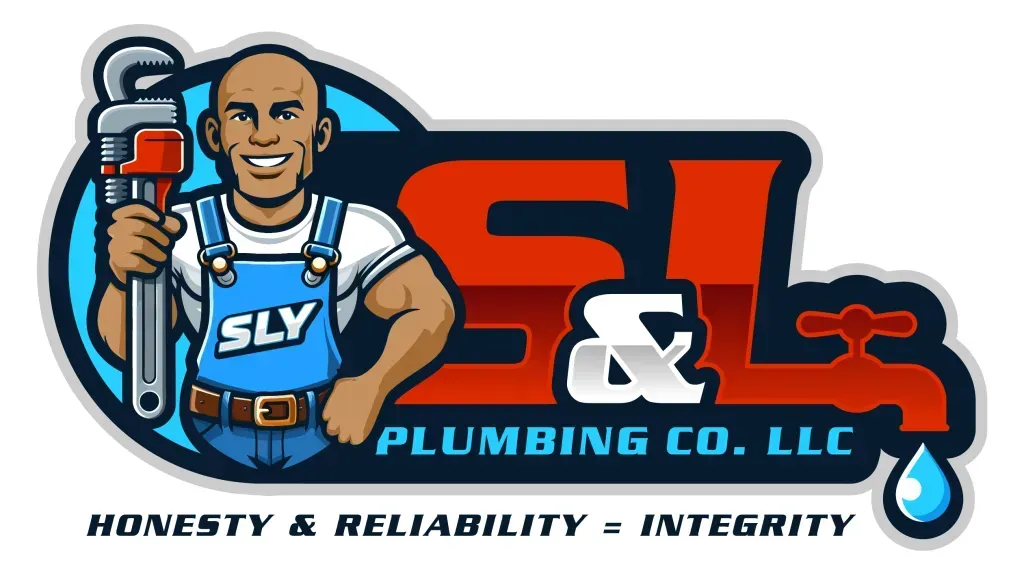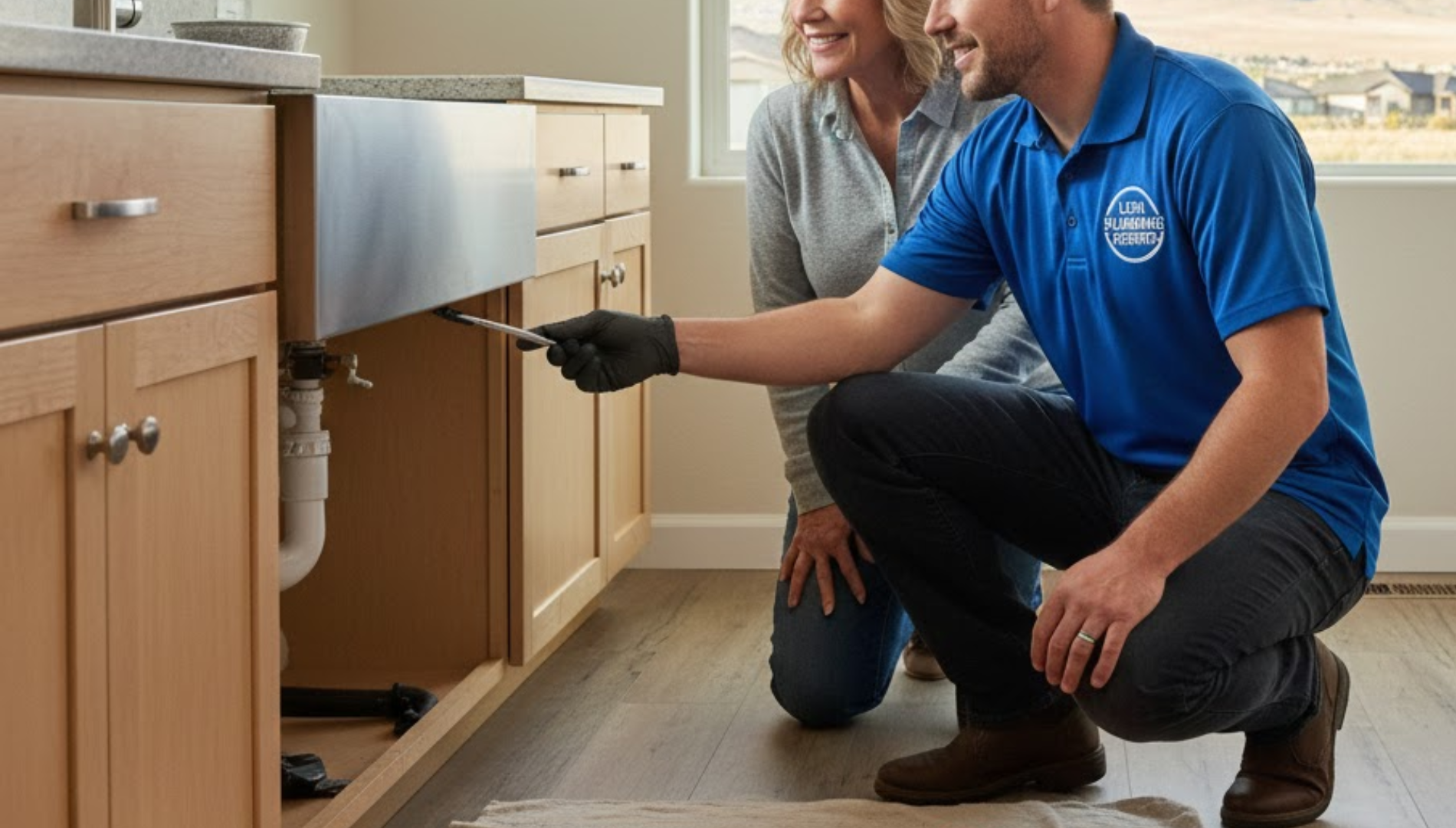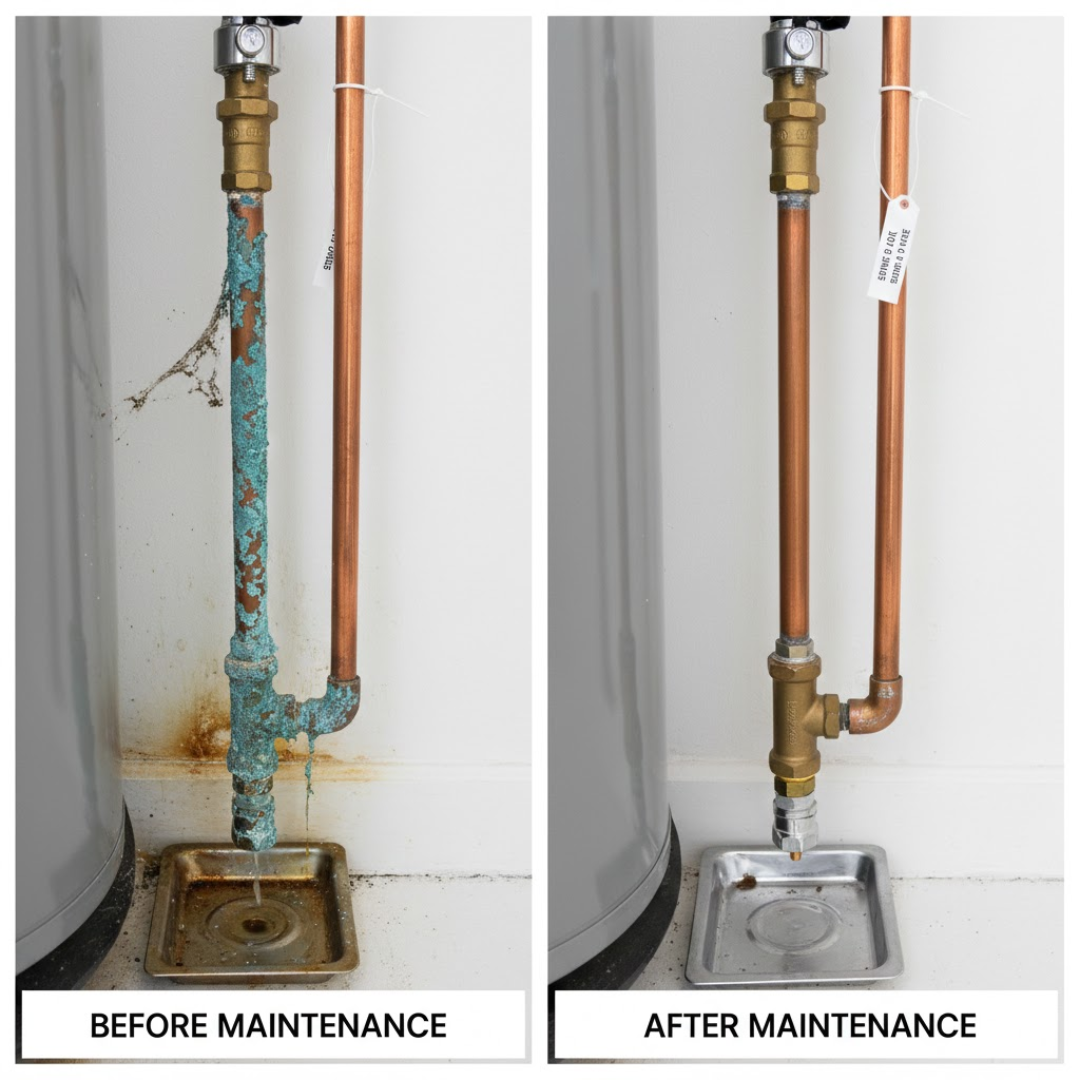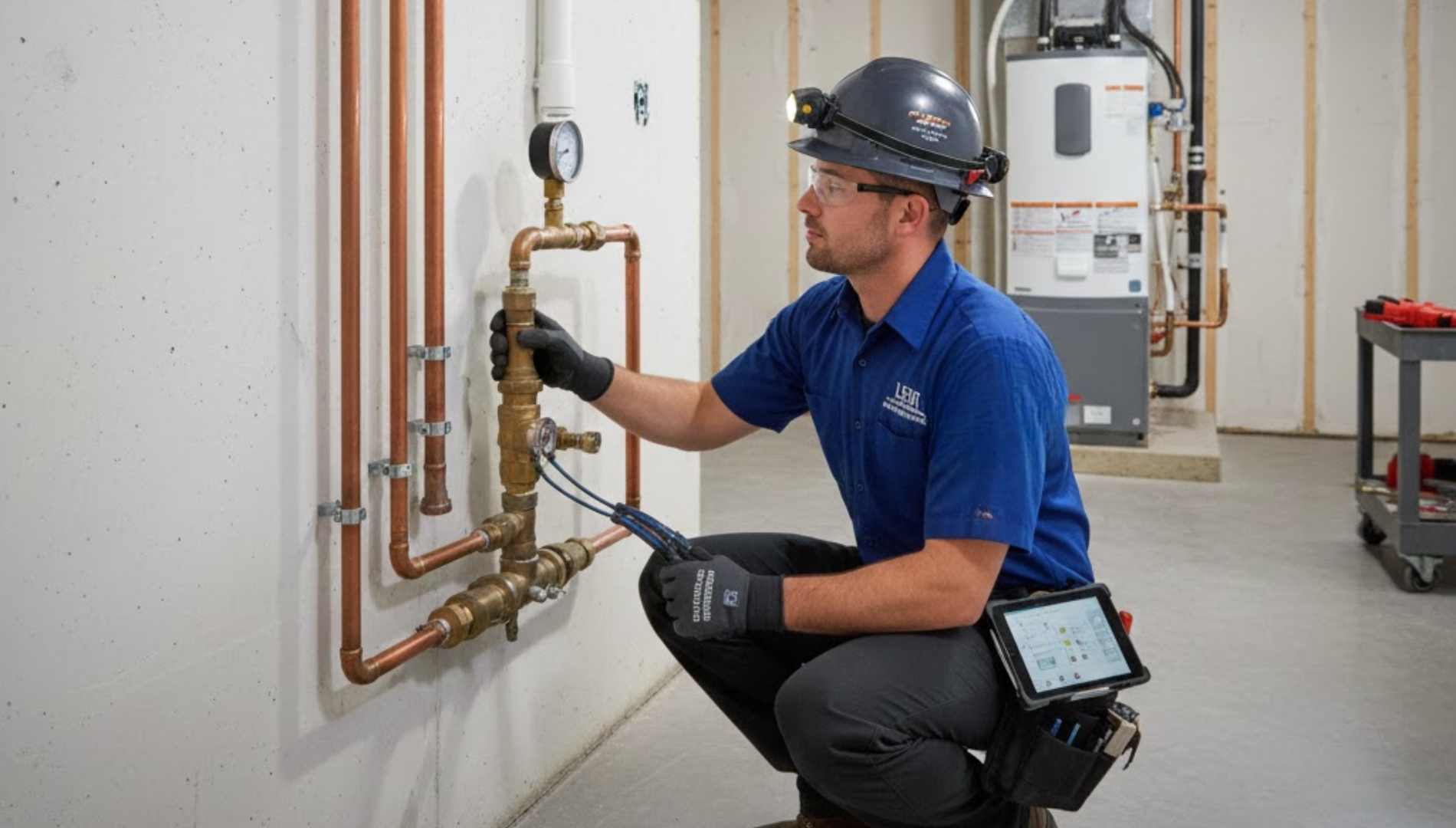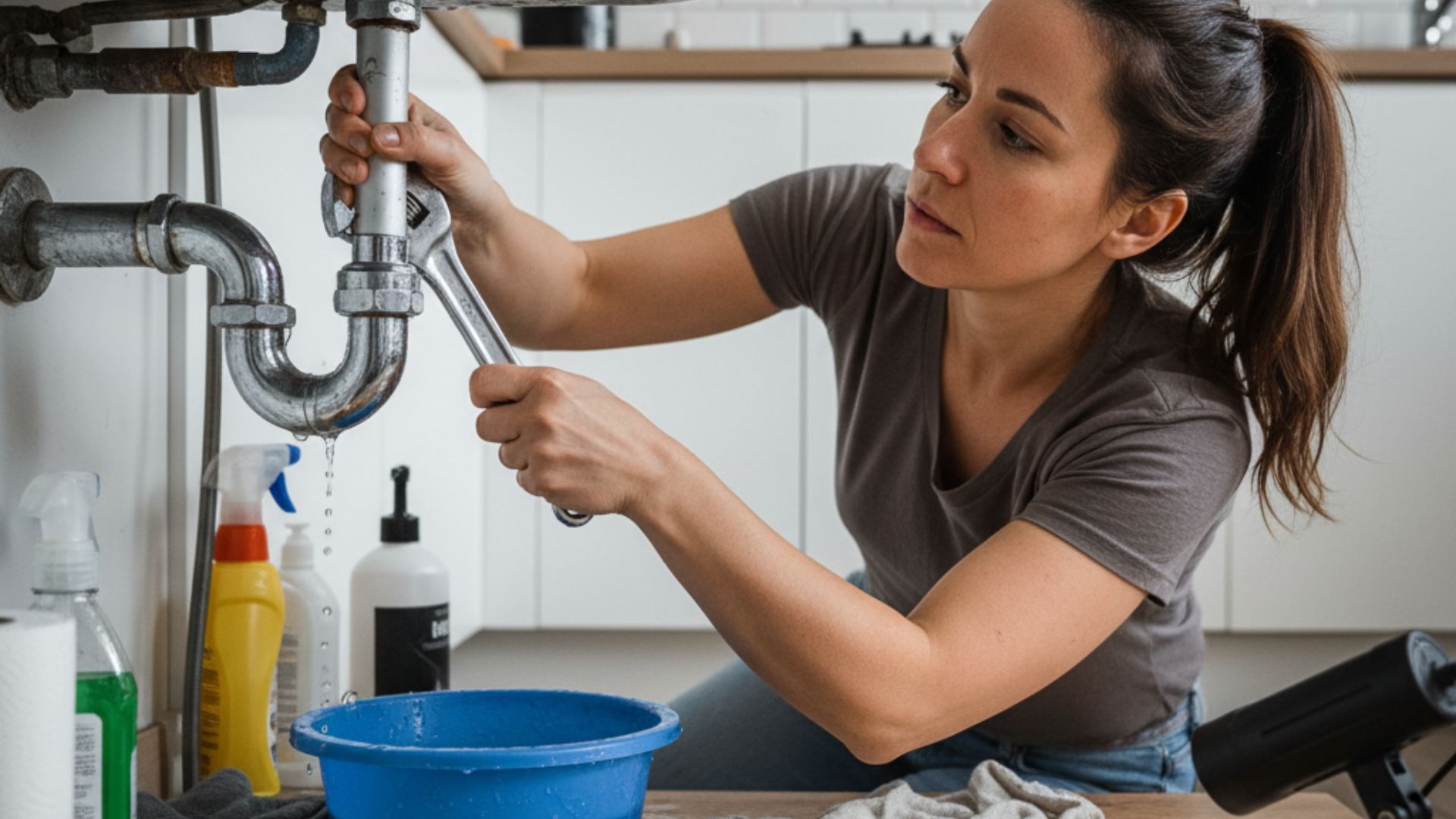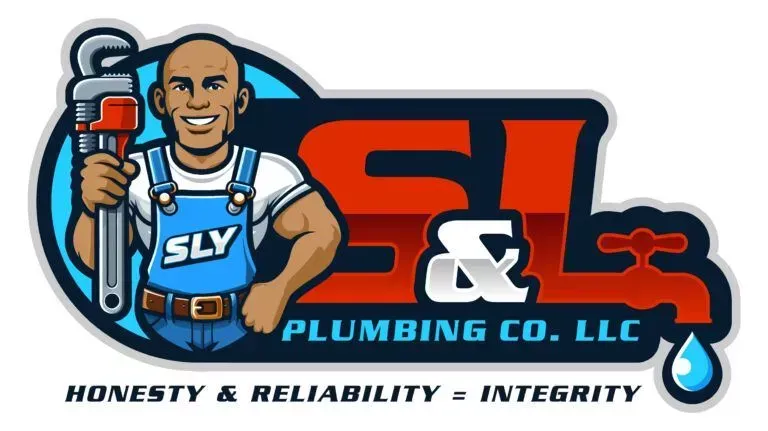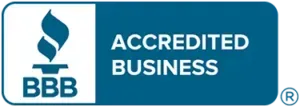Plumbing Red Flags: Signs It’s Time for a Professional Inspection
It starts small, a slow drain, a faint dripping noise, or a whiff of something musty near the sink. At first, it seems harmless. But these little annoyances can be early warning signs of a much bigger problem hiding behind your walls or under your floors.
Ignoring plumbing red flags can lead to costly repairs, water damage, and even mold growth. In this guide, we’ll walk you through the most common warning signs, explain what they mean, and show you when it’s time to call a professional plumber in Lehi for an inspection.
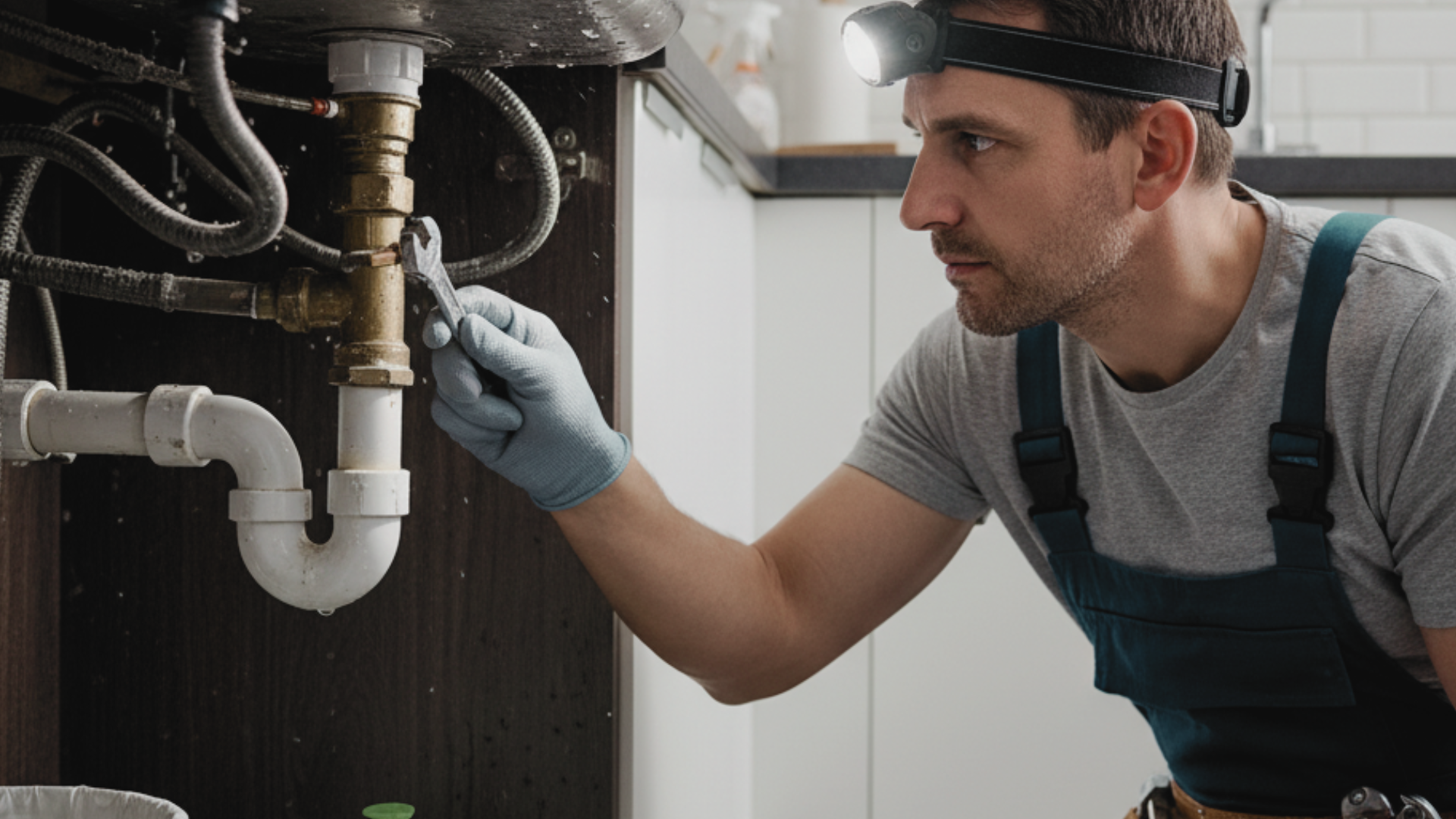
Your home’s plumbing system works hard every day supplying water, removing waste, and keeping things running smoothly. But when something goes wrong, it rarely announces itself right away. Small leaks or slow drains can quietly grow into serious issues.
Knowing when to call a professional makes all the difference. Regular inspections and quick action can prevent thousands of dollars in damage and save you from stressful emergencies. If you live in Utah, S&L Plumbing Co LLC is a trusted plumber in Lehi offering full plumbing inspection services to keep your home in top condition.
Why Professional Plumbing Inspections Are Important
A professional inspection does more than check for leaks it evaluates your entire water system’s health. Plumbers use tools like camera scopes, pressure gauges, and leak detectors to identify hidden issues before they escalate.
Routine inspections can:
- Detect corrosion, cracks, or clogs early.
- Prevent costly repairs by catching small leaks.
- Improve water efficiency and safety.
- Extend the life of your plumbing system.
In short, plumbing inspection services are like an annual health check-up for your home preventive, protective, and cost-effective.
Common Plumbing Red Flags to Watch For
You don’t have to be a professional to spot trouble early. Here are the warning signs that suggest it’s time to schedule an inspection.
1. Unusual Noises
If your pipes bang, whistle, or gurgle, that’s not normal. It often means trapped air, loose fittings, or changes in pressure. This could be caused by water hammer (sudden stoppages in flow) or poorly secured pipes.
2. Low Water Pressure
A sudden drop in water pressure can point to sediment buildup, partial blockages, or a hidden leak. If cleaning faucet aerators doesn’t help, a professional inspection will find the source especially if pressure drops across multiple fixtures.
3. Slow or Frequently Clogged Drains
Occasional clogs happen. But if drains keep backing up, there may be buildup or root intrusion in the main sewer line. Persistent clogs are one of the most common plumbing problems that require expert tools to fix.
4. Foul Odors or Mold
If you notice musty smells or visible mold near pipes, water might be leaking inside your walls. Sewer gas smells from drains are another major red flag that needs immediate professional attention.
5. Discolored or Rusty Water
Brown, yellow, or reddish water usually signals rust in pipes or sediment from the water heater. A greenish tint can mean copper corrosion. These issues may indicate your pipes are deteriorating and only an inspection can confirm the cause.
6. Rising Water Bills
If your usage hasn’t changed but your bill has, you could have a hidden leak underground or behind a wall. A professional plumber in Lehi can perform leak detection using advanced equipment to pinpoint the problem quickly.
7. Water Stains or Damp Spots
Stains on ceilings or floors are never cosmetic. They’re usually signs of long-term leaks. If left untreated, they can weaken your home’s structure or cause mold infestations.
8. Strange Smells from Drains
Bad odors often come from bacteria buildup or sewer gases escaping through dry traps. A licensed plumber can clean and inspect the pipes to restore safe, fresh air quality.
What Is a Plumbing Inspection?
A plumbing inspection is a complete evaluation of your home’s water supply, drainage, and heating systems. During an inspection, a licensed plumber will:
- Check for visible and hidden leaks.
- Test water pressure and temperature.
- Examine the water heater, drains, and fixtures.
- Inspect valves, joints, and seals.
- Use cameras to inspect sewer lines if needed.
Afterward, you’ll receive a report detailing any issues found and recommended next steps.
Regular inspections are key to residential plumbing maintenance, especially in older homes or homes with hard water.
How Do I Choose the Right Plumber for an Inspection?
Finding the right professional ensures you get a thorough, honest evaluation. Look for:
- Valid license and insurance.
- Positive customer reviews.
- Transparent pricing and detailed estimates.
- Experience with local water systems.
Local professionals like S&L Plumbing Co LLC combine expertise with community trust making them reliable partners for long-term plumbing care.
What Is the 135 Rule in Plumbing?
The 135 Rule refers to the ideal pipe angle used in plumbing installations. Fittings and turns should follow a 135-degree configuration to allow smooth water flow and prevent pressure buildup or clogs.
Certified plumbing inspection services ensure your plumbing layout follows this rule. Improper angles can cause drainage issues, backups, and stress on joints, problems that only a trained eye can spot during inspection.
What to Know About Plumbing for Beginners
If you’re a new homeowner, here are simple tips to get familiar with your plumbing system:
- Find and label your main water shut-off valve.
- Check for leaks monthly under sinks and behind appliances.
- Flush your water heater once a year to remove sediment.
- Don’t flush wipes, grease, or coffee grounds.
- Schedule a yearly inspection for peace of mind.
Basic maintenance builds confidence but always call a professional for repairs beyond tightening a pipe or replacing a washer.
How Do I Know If My Plumbing Is Failing?
Plumbing systems don’t fail overnight they send warnings first. Here are signs that your plumbing may be nearing its end:
- Multiple leaks in short periods.
- Brown or smelly water.
- Frequent clogs in multiple drains.
- Water heater older than 10 years.
If several of these apply, call a professional plumber in Lehi for an in-depth inspection. Early detection prevents full system failure and saves money.
How Do You Inspect Plumbing Lines?
Professionals inspect plumbing lines using a mix of visual checks and specialized tools. Here’s what’s involved:
- Visual Inspection: Checking for visible leaks, rust, or corrosion.
- Pressure Test: Measures system integrity and water flow.
- Camera Inspection: Sends a flexible camera through drains or sewer lines to locate damage or buildup.
- Moisture Detection: Identifies hidden leaks behind walls.
These techniques give homeowners a clear view of problems without unnecessary digging or guesswork.
When Should I Schedule a Professional Inspection?
- Annually: For homes over 10 years old.
- Seasonally: Before winter to avoid frozen pipes.
- Immediately: If you notice strange odors, damp spots, or water discoloration.
Regular inspections keep plumbing safe, efficient, and up to code especially in areas with hard water like Lehi.
Quick Tips to Prevent Plumbing Problems
A few small habits can prevent major plumbing headaches:
- Avoid pouring fats or oils down drains.
- Clean shower drains monthly.
- Use drain strainers to catch hair and debris.
- Test your shut-off valve twice a year.
- Schedule residential plumbing maintenance regularly.
Before scheduling an inspection, get quotes from local plumbers in Lehi to compare service details and ensure fair pricing.
Cost vs. Benefit: Why Inspections Save Money
Routine inspections may seem like an extra cost, but they save you more in the long run. Preventive care reduces emergencies, water damage, and wasted water.
According to theU.S. Environmental Protection Agency, fixing common household leaks can save the average homeowner about 10% on water bills annually. That’s money saved and stress avoided by catching issues before they spiral.
What to Expect During a Plumbing Inspection
Here’s how a typical inspection with a plumber in Lehi works:
- Initial walkthrough: Discuss any issues or concerns.
- System testing: Check pressure, flow, and visible pipes.
- Detailed inspection: Review drains, valves, fixtures, and the water heater.
- Diagnosis and report: Identify any weak points and offer repair recommendations.
It’s quick, non-invasive, and provides a clear picture of your system’s health.
When DIY Isn’t Enough
DIY fixes can handle simple clogs or minor leaks, but most plumbing problems require professional tools and experience.
DIY risks include:
- Misdiagnosing the problem
- Causing further leaks
- Damaging pipes or fittings
- Voiding warranties
If the issue involves hidden leaks, major blockages, or strange odors, skip the guesswork and call a certified professional.
Conclusion
Plumbing issues rarely fix themselves. What starts as a small leak or slow drain can become a full-blown emergency if ignored. Recognizing red flags early and calling a trusted expert is the smartest move for any homeowner.
If you’ve noticed any of these warning signs, contact S&L Plumbing Co LLC, your reliable plumber in Lehi. Their experienced team provides thorough inspections, clear estimates, and dependable service to keep your home safe and comfortable.
Follow our social media pages below:
Ready to work with S&L Plumbing Co?
Let's connect! We’re here to help.
Send us a message and we’ll be in touch.
Or give us a call today at (385) 250-8900.
